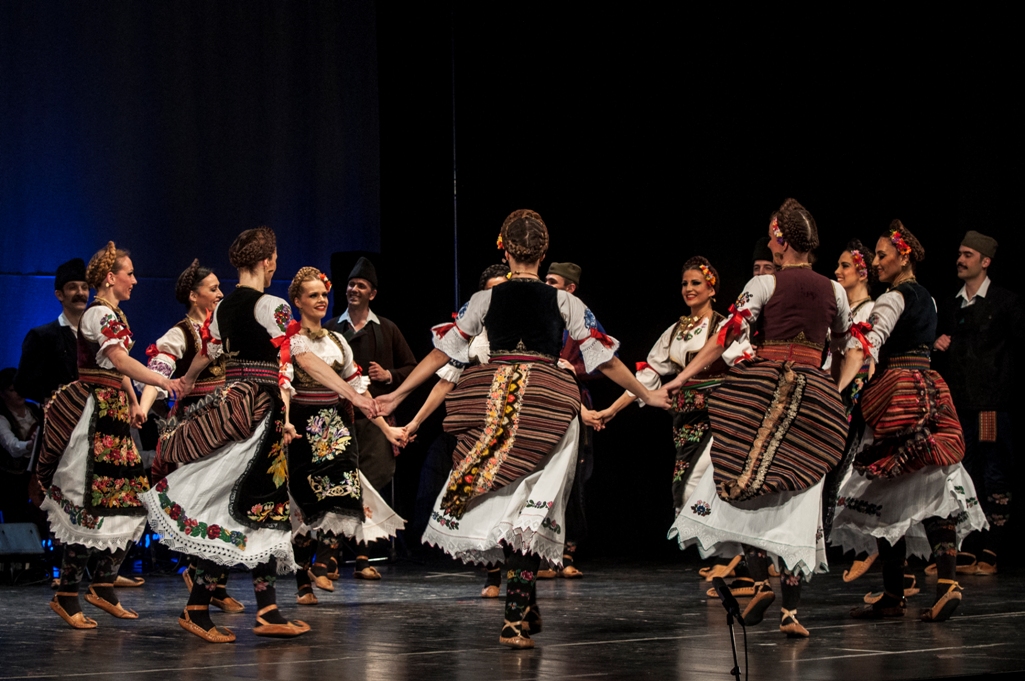The kolo, three-step kolo and six-step kolo, is a very popular folk dance in the current dance practice of Serbia and a vital form of traditional culture. It is performed by interlinked dancers, where the first and last one have a distinct role in determining the progression of the dance, which usually unfolds along a semi-circular line, and only rarely along a spiral or a serpentine line. The kolo is always performed to the accompaniment of music; the dancers follow the music by performing various types of steps. The basic pattern of the steps involves moving to the right, hopping at the same spot, and then, moving to the left and hopping at the same spot, with continuous hopping. Kolo dancing is an indispensable part of all gatherings, private and public celebrations, and it is performed by members of all social, professional and age groups, both in rural and urban environments.
Kolo is a segment of performing arts that is present in the entire territory of Serbia. Along with the Serbian Orthodox population, which considers it as national identity trait, it is also performed by other ethnic and confessional communities.
The kolo, as a traditional folk dance, has been inscribed on the Representative List of the Intangible Cultural Heritage of Humanity in 2017.
Video: Kolo, traditional folk dance, Ensemnble 'Kolo'



